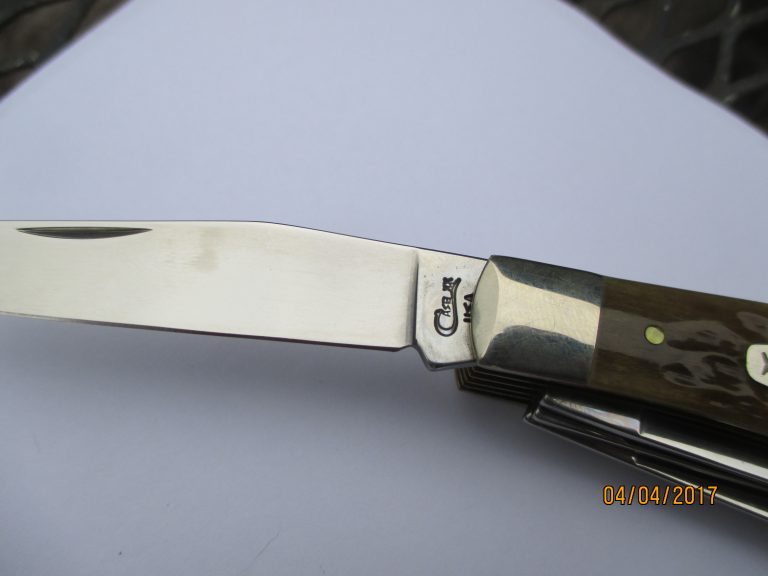
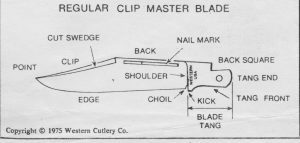
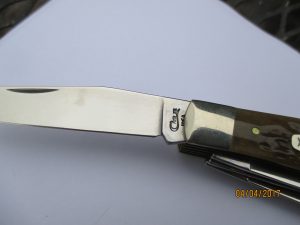
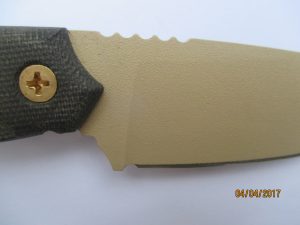
Is a knife choil a nick, a notch, a finger groove or something else? And besides, what’s the difference between a nick and a notch?
What it is is one of those knife-specific terms that seems to evade proper definition by many, everyone from knife newbies to knife aficionados.
One definition for knife choil from an unknown source describes it as “a small notch between the edge and tang of the blade.” According to the “Knife Encyclopedia” on the website of A.G. Russell Knives, a knife choil is “the cut-away area between the edge and the tang of a pocketknife blade and between the edge and the guard of a straight (aka fixed-blade) knife. The choil may or may not have enough space for a finger. Its true purpose is to allow the edge to be sharpened all the way to the tang in a pocketknife and to the end of the edge in others. Any reference of choil and finger space or choil and handle is improper.” In an old issue of the American Blade, today’s BLADE® Magazine, BLADE Magazine Cutlery Hall-Of-Fame© member Blackie Collins defined a knife choil as “the area immediately in front of the guard at the bottom of the blade. It is occasionally shaped to accept the index finger to facilitate a more secure hold on certain types of knives for various operations. It actually serves a more useful purpose as it allows the full length of the cutting edge to be properly sharpened.”
To expand on the definitions of both A.G. Russell Knives and Mr. Collins, while a knife choil may have enough space to accept a finger for certain types of cutting operations, such a capability is not the choil’s stated purpose. In some instances you may hear the term for such a feature called a finger choil. According to Russell’s definition above, such a reference is “improper.” In fact, sometimes what is incorrectly referred to as a finger choil is really more of a finger groove that spans the undersides of both the handle and the ricasso or the blade tang. Meanwhile, some new factory knives seem to be downplaying the knife choil if not eliminating it entirely.
Be that as it may, the chief purpose of the knife choil, as noted by the definitions of both Russell and Collins, is to allow the full length of the cutting edge to be properly sharpened. In other words, it is simply a small notch between where the cutting edge ends and the ricasso or the blade tang begins that indicates where you should stop when sharpening the blade with a stone, diamond-coated abrasive or what have you.
 NEXT STEP: Download Your Free KNIFE GUIDE Issue of BLADE Magazine
NEXT STEP: Download Your Free KNIFE GUIDE Issue of BLADE Magazine
BLADE’s annual Knife Guide Issue features the newest knives and sharpeners, plus knife and axe reviews, knife sheaths, kit knives and a Knife Industry Directory.Get your FREE digital PDF instant download of the annual Knife Guide. No, really! We will email it to you right now when you subscribe to the BLADE email newsletter.


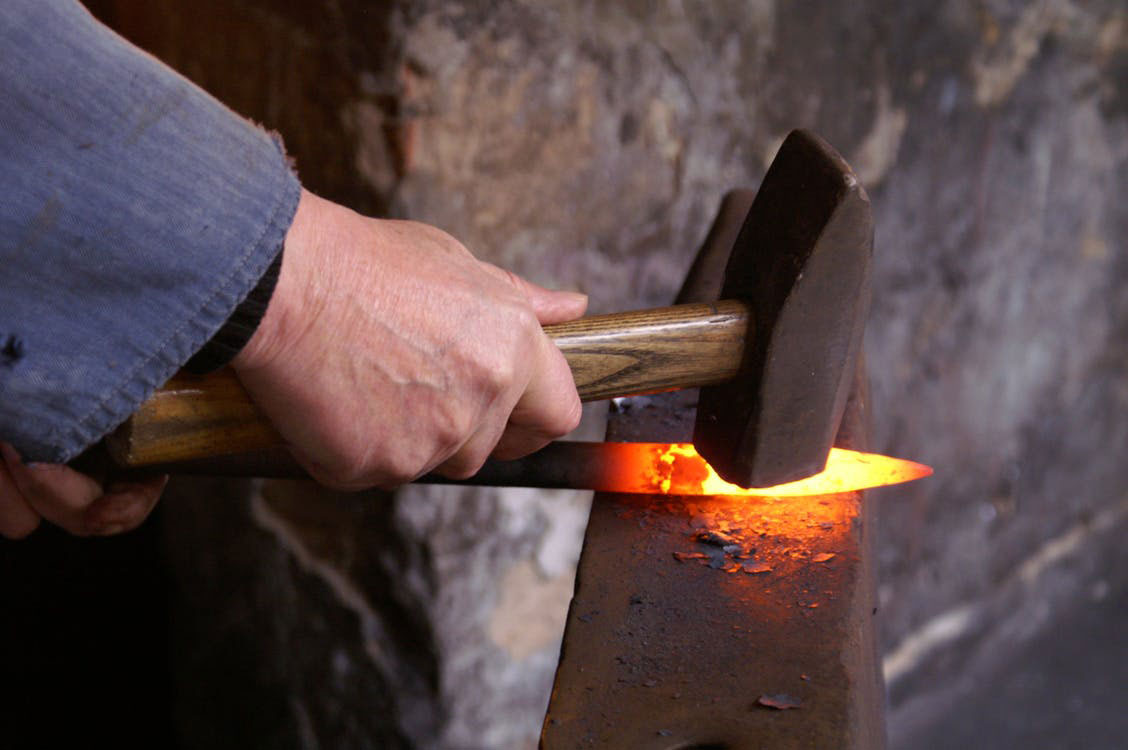
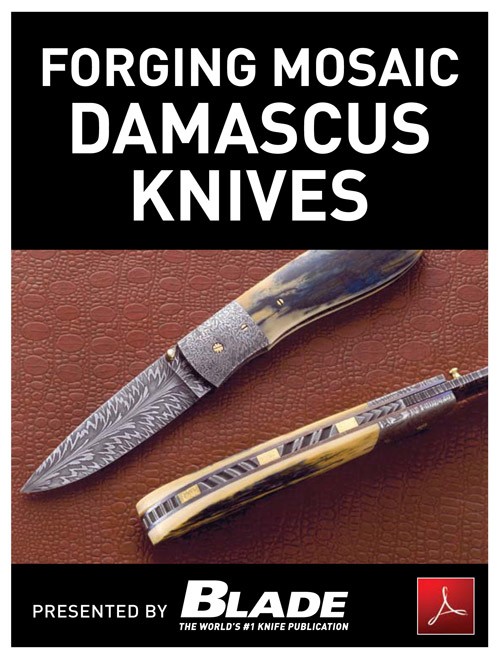
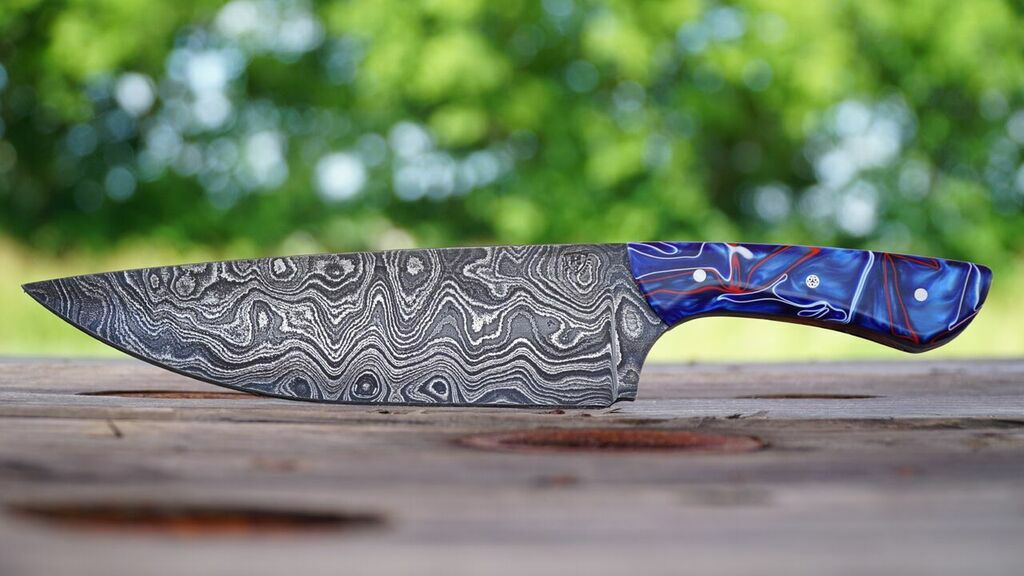


Thanks for this, Steve. Would the choil be different in a chef’s knife? I’ve seen it defined as the sharp rear corner of the blade, as distinct from the rounded bottom edge of the bolster. Also, pronunciation is a vexed querstion. Is it pronounced with a sounded H, as in ‘choice,’ or a silent H, as in ‘Chianti’ or ‘coil’?
A choil should be no different, no matter what the blade. As A.G. Russell notes, the choil’s original purpose was as a small notch to indicate where to stop sharpening the edge when you’re sharpening the knife. Many if not all chef’s knives do not have such a notch, so it could be argued they do not even have choils. On the other hand, it could also be argued that the area of the blade just in front of the handle that begins to curl or go up toward the bolster and can serve as a kind of single guard could be called a choil. I’m sure you will hear arguments from both sides and others as well.
Oh, and as far as i know, the ch of choil is pronounced like the ch of chair. Oddly enough, i checked by Webster’s Unabridged Dictionary–the big kind that weighs a ton–and choil isn’t even in there. Figures, right?
I hope this helps and thanks for reading!